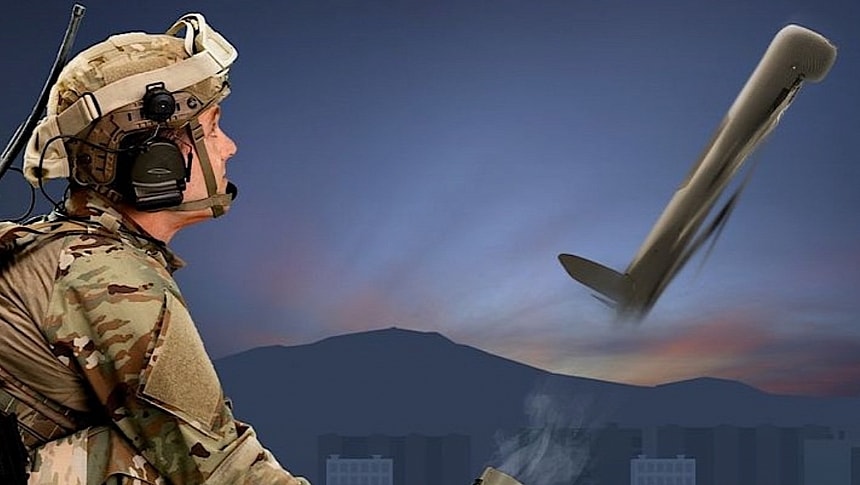There are presently two major conflicts raging on the planet, one over in Ukraine and the other in the Middle East. With no end in sight for either of them, these conflicts have forever cemented the role drones of all shapes, sizes, and capabilities have in modern warfare.
Some of the most dangerous technologies of this kind are the ones the military likes to call loitering munitions. They are weapons that can not only be fired at an enemy, but also stalk said enemy until the drone's operator is confident the strike will have the desired effect.
Several kinds of loitering munitions are currently in use, but more are being developed all over the world. A company called AeroVironment, for instance, has in its portfolio something called the Switchblade 300 Block 20.
The Block 20 is based on a miniature drone that was introduced back in 2011. In its standard configuration, the Switchblade 300 can travel as far as 6.2 miles (10 km) and can stay airborne for about 15 minutes.
Operated by a single soldier, the drone can reach speeds of 63 mph (101 kph). That's for cruising purposes, as when it's time to strike, in a bid to increase the force of the impact, it can accelerate to a lot more than that, namely 100 mph (160 kph).
The Block 20 variant adds on top of all that a new tablet-based fire control system. Because the thing is launched by means of a launch tube, the control system is now integrated with the launcher tube.
The soldiers operating the drone can direct it to strike through cursor-on-target GPS and real-time video that work even beyond line-of-sight. In this configuration, the Switchblade can stay an additional five minutes in the air compared to the stock variant. On top of it all, says the company that makes it, it also integrates "lessons learned from the conflict in Ukraine, including operating in contested environments."
When it was first introduced about a year ago, there was no indication as to when Block 20 would be deployed for military use. This week, however, AeroVironment confirmed it will enter the U.S. Marine Corps' arsenal.
The military branch selected the drone to be part of the first phase of the Organic Precision Fires-Light (OPF-L) program which seeks to "provide the Marine Corps with organic, anti-armor/anti-personnel, precision fires capability at the tactical level." In this case organic does not mean related to something living, but refers to the natural integration of the drone in existing operations and military units.
The Marine Corps has awarded AeroVironment a contract worth $8.9 million to deploy the drones, but if all goes according to plan (and there's no reason to believe otherwise) that could grow to a pretty impressive $249 million.
Several kinds of loitering munitions are currently in use, but more are being developed all over the world. A company called AeroVironment, for instance, has in its portfolio something called the Switchblade 300 Block 20.
The Block 20 is based on a miniature drone that was introduced back in 2011. In its standard configuration, the Switchblade 300 can travel as far as 6.2 miles (10 km) and can stay airborne for about 15 minutes.
Operated by a single soldier, the drone can reach speeds of 63 mph (101 kph). That's for cruising purposes, as when it's time to strike, in a bid to increase the force of the impact, it can accelerate to a lot more than that, namely 100 mph (160 kph).
The Block 20 variant adds on top of all that a new tablet-based fire control system. Because the thing is launched by means of a launch tube, the control system is now integrated with the launcher tube.
The soldiers operating the drone can direct it to strike through cursor-on-target GPS and real-time video that work even beyond line-of-sight. In this configuration, the Switchblade can stay an additional five minutes in the air compared to the stock variant. On top of it all, says the company that makes it, it also integrates "lessons learned from the conflict in Ukraine, including operating in contested environments."
When it was first introduced about a year ago, there was no indication as to when Block 20 would be deployed for military use. This week, however, AeroVironment confirmed it will enter the U.S. Marine Corps' arsenal.
The military branch selected the drone to be part of the first phase of the Organic Precision Fires-Light (OPF-L) program which seeks to "provide the Marine Corps with organic, anti-armor/anti-personnel, precision fires capability at the tactical level." In this case organic does not mean related to something living, but refers to the natural integration of the drone in existing operations and military units.
The Marine Corps has awarded AeroVironment a contract worth $8.9 million to deploy the drones, but if all goes according to plan (and there's no reason to believe otherwise) that could grow to a pretty impressive $249 million.









